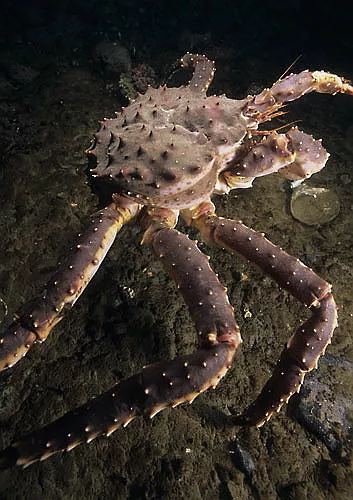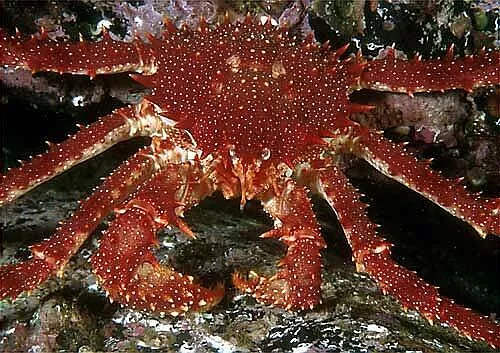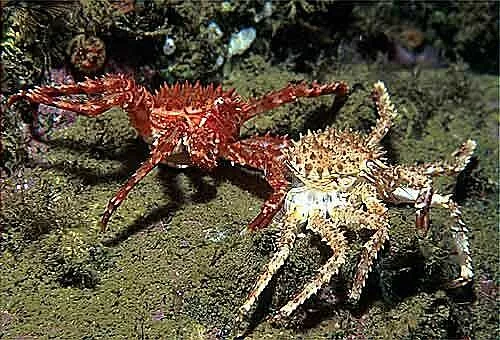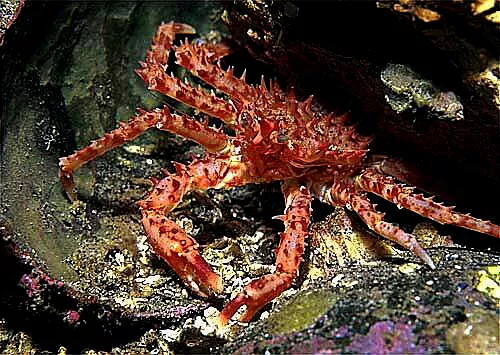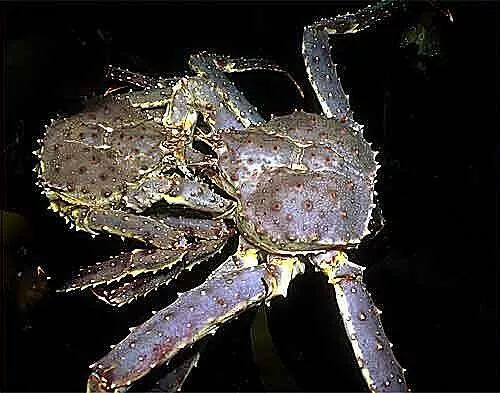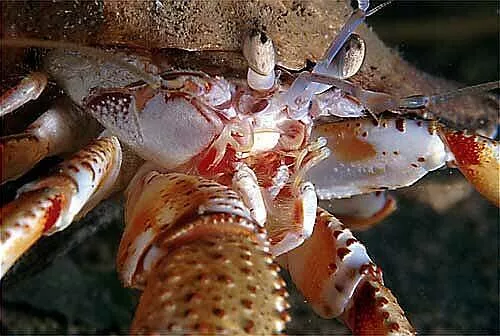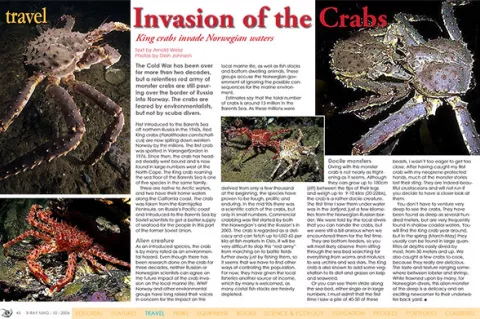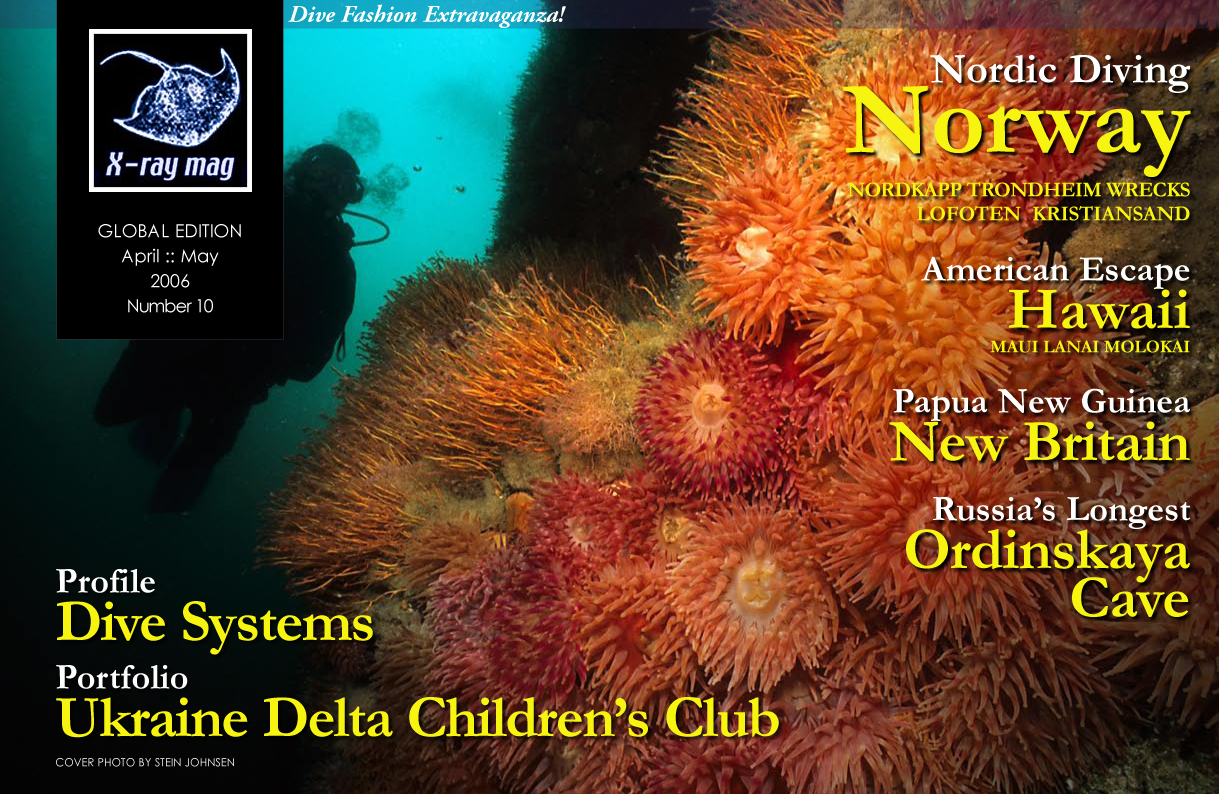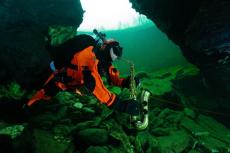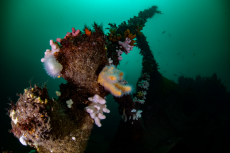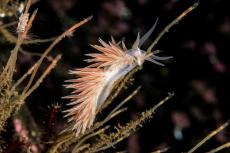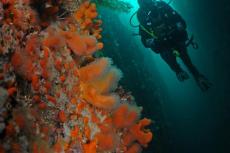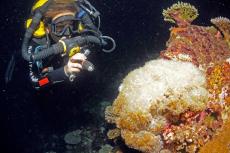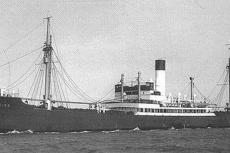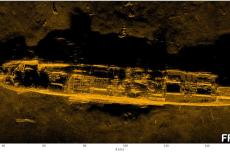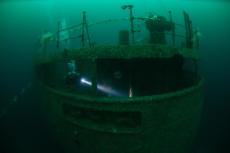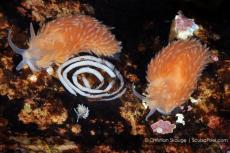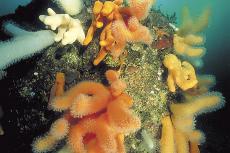King crabs invade Norwegian waters.
The Cold War has been over for more than two decades, but a relentless red army of monster crabs are still pouring over the border of Russia into Norway. The crabs are feared by environmentalists, but not by scuba divers.
Contributed by
First introduced to the Barents Sea off northern Russia in the 1960s, Red King crabs (Paralithodes camtschaticus) are now spilling down western Norway by the millions. The first crab was spotted in Varangerfjorden in 1976. Since then, the crab has headed steadily west bound and is now found in large numbers west of the North Cape. The King crab roaming the sea floor of the Barents Sea is one of five species in the same family.
Three are native to Arctic waters, and two have their home waters along the California coast. The crab was taken from the Kamtsjatka Peninsula, on Russia’s Pacific coast and introduced to the Barents Sea by Soviet scientists to get a better supply of seafood for the people in this part of the former Soviet Union.
Alien creature
As an introduced species, the crab is by many rated as an environmental hazard. Even though there has been research done on the crab for three decades, neither Russian or Norwegian scientists can agree on the future impact of the crab invasion on the local marine life.
WWF Norway and other environmental groups have long raised their voices in concern for the impact on the local marine life, as well as fish stocks and bottom dwelling animals. These groups accuse the Norwegian government of ignoring the possible consequences for the marine environment.
Estimates say that the total number of crabs is around 15 million in the Barents Sea. As these millions were derived from only a few thousand at the beginning, the species have proven to be tough, prolific and enduring. In the mid 90s there was a scientific catch of the crabs, but only in small numbers. Commercial crabbing was first started by both the Norwegian’s and the Russian’s in 2003.
The crab is regarded as a delicacy and can fetch up to USD 65 per kilo at fish markets in Oslo. It will be very difficult to stop this “red army” from marching on to battle fields further away just by fishing them, so it seems that we have to find other ways of controlling the population. For now, they have given the local fisheries another source of income, which by many is welcomed, as many costal fish stocks are heavily depleted.
Docile monsters
Diving with this monster crab is not nearly as frightening as it seems. Although they can grow up to 180cm (6ft) between the tips of their legs and weigh up to 9-10 kilos (20-22lbs), the crab is a rather docile creature. The first time I saw them under water was in the Jarfjord, just a few kilometres from the Norwegian-Russian border. We were told by the local divers that you can handle the crabs, but we were still a bit anxious when we encountered them for the first time.
They are bottom feeders, so you will most likely observe them sifting through the sea bed searching for everything from worms and molluscs to sea urchins and sea stars. The King crab is also known to add some vegetation to its diet and grazes on kelp and seaweed.
Or you can see them stride along the sea bed, either single or in large numbers. I must admit that the first time I saw a pile of 40-50 of these beasts, I wasn’t too eager to get too close. After having caught my first crab with my neoprene protected hands, much of the monster stories lost their sting. They are indeed beautiful crustaceans and will not run if you decide to have a closer look at them.
You don’t have to venture very deep to see the crabs. They have been found as deep as several hundred meters, but are very frequently found in shallow coastal waters. You will find the King crab year around, but in the spring (March-May) they usually can be found in large quantities at depths easily dived by most, from 30 meters and up.
We also caught a few crabs to cook, because they really are delicious. The taste and texture ranging somewhere between lobster and shrimp. While frowned upon by many, for Norwegian divers, this alien monster of the deep is a delicacy and an exciting newcomer to their underwater back yard.

